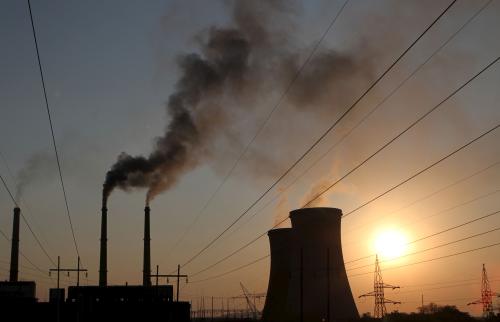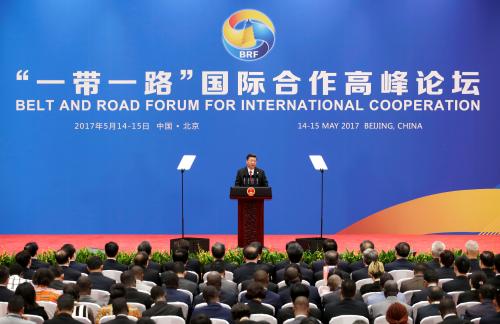The World Bank just released a report on the economics of China’s Belt and Road Initiative (BRI). It provides estimates of the potential of Belt and Road transport corridors for enhancing trade, foreign investment, and living conditions for people in the countries that they connect. The report also tries to answer an important question: What happens to the internal geography of countries when they increase connections with others?
The question is important for national and subnational governments. Spatial equity in development outcomes ranks high as a barometer of political success. We know from research on New Economic Geography that regions with better access to foreign markets, such as large cities and border or port regions, stand to get the biggest gains from improved trade linkages. In fact, connectivity improvements could bring more spatial concentration, not the dispersion of economic activity as firms tend to cluster together to reap agglomeration economies (the winners). In the absence of mechanisms to compensate places that face “net economic losses” (the losers), such initiatives would exacerbate spatial inequalities and pose fiscal burdens for regions less and less able to bear them. Some parts of the country may only see trucks and rail wagons roll by whilst having to service the debt associated with infrastructure investments.
Places along the Central Asian Belt
The BRI has six main economic corridors: (1) the New Eurasian Land Bridge; (2) the China-Central Asia-West Asia Corridor; (3) the China-Pakistan Corridor; (4) the Bangladesh-China- Myanmar Corridor; (5) the China-Mongolia-Russia Corridor; (6) the China-Indochina Peninsula Corridor. In the new report, Somik Lall and Mathilde Lebrand focus on landlocked Central Asia—Kazakhstan, Kyrgyz Republic, Uzbekistan, and western China—but also consider how investments outside Central Asia will improve the region’s connections to the world.
In effect, they looked at what investments in transport corridors will mean for people in different parts of Central Asia. For Central Asian countries, the analysis is at the district level, called raion in most post-Soviet states. There are 174 districts in Kazakhstan, 162 districts in Uzbekistan, and 45 districts in Kyrgyzstan. For China, there are 2048 sub-provincial units.
The simplest way to describe each place is by measuring its structure of production, distance from a gateway, and its amenities. Places with good amenities, that produce tradeable goods and services, and are closer to global markets will get the biggest benefits from the BRI.
They look at what happens to welfare levels when there are three changes: infrastructure investments, border reforms, and greater labor mobility. The first two are a part of the Belt and Road Initiative, the third is not. But for China and the countries in Central Asia, the economic effects of the BRI depend as much on reduced transport costs and border reforms as they do on the domestic mobility of workers.
Who wins, who loses?
To keep things simple, Lall and Lebrand assume that before the BRI all goods are shipped through Eastern ports. The BRI opens up three new gateways: Khorgos for the New Eurasia Land Bridge, Kashgar for the China-Pakistan Corridor, and Kunming for the Bangladesh-China-India-Myanmar and the China-Indochina Peninsula corridors. The time it takes to transport products has three components: the time to reach a domestic hub using the road network, the time from this domestic hub to reach a main gateway using international corridors, and the time to cross borders between the domestic hub and the gateway using the best transport route. To reach major markets, Central Asian shippers have to reach Moscow, Istanbul, and Urumqi, the capital of Xinjiang province in Western China. The two ways to cut transport time and costs are better transport facilities and fewer border hassles.
BRI transport investments favor development in larger cities near border crossings, while people in more distant regions tend to lose out. Lower transport costs increase prices in the export sector and push wages and land rents up. In addition, because wages are equalized across sectors, prices in the non-tradable sectors also increase. While the amount of land is fixed in each district, workers are mobile across districts so internal migration equalizes wages across locations. Complementary investments in trade facilitation accentuate the gains in and around urban hubs near border crossings, so they increase spatial gaps in wages and welfare. Improved domestic transport networks help to spread the benefits, and offset the growing differentials.
Countries where people are not mobile will experience higher spatial wage inequality and, relatedly, lower welfare. In Kazakhstan, for example, real wages will grow five times more in and around Almaty than in northern parts close to the Russian border. The development benefits that Kazakhstan will get from closer economic relations with China will depend on how willing Kazakhs are to move to places like Almaty.
This is one aspect of a general principle: How much of the gains from economic integration a Central Asian country gets depends on complementary reforms such as the removal of Soviet-era obstacles to migration. Not making such reforms can convert gains into losses. The estimations indicate, for example, that spatial inequalities increase three-fold in Kazakhstan after the BRI if people face high mobility costs, compared to scenarios with lower costs of moving. Growing inequalities can jeopardize both political stability and economic growth in middle-income countries, and turn winners into losers.
Domestic policies and investments that increase mobility of labor, goods, and services can mediate potential spatial efficiency-equity tradeoffs. Within countries, workers can have very different levels of market access depending on where they live. The difference between the areas with highest and lowest accessibility to markets is 44 percent in Kyrgyzstan, 57 percent in Kazakhstan, 146 percent in China, and 200 percent in Uzbekistan. These differentials fall as labor mobility increases. When they do, spatial differences in the welfare of workers and their families also fall.
What happens in Kazakhstan?
In the absence of border reforms, BRI infrastructure investments disproportionately affect population and wages in the districts around Almaty. Kazakhstan’s comparative advantage in trade with China is in agriculture. Almaty and other large cities in Kazakhstan are specialized in non-tradable services and local manufacturing, so they should not get much of a boost. But cheaper manufacturing imports from neighboring China and better urban amenities mean that many people will keep moving to large urban hubs, and population pressures will increase housing costs and congestion.
Figure 1: With low labor mobility, activities concentrate around Almaty and Astana
Gains are more equitably distributed across Kazakhstan if border costs are also cut. A decline in border costs also supports large welfare gains in northern districts, the breadbasket of the country. The population of these regions also grows with new economic opportunities. Districts with a comparative advantage in agriculture that benefit from lower transport costs end up with more workers in services that support agriculture. So lowering both transport and border costs could lead to a more broadly distributed urbanization.
What happens in China?
Under the current conditions, reduced transport costs and new gateways along the land borders in the west and south of the country actually create incentives for workers to move towards the center and the east (Figure 2). The fastest growing districts are all located in the eastern provinces of China, already the densest, richest and most integrated region. With low labor mobility within the country, the BRI actually benefits the central and coastal parts of China more than it does the west. When this happens, wages ought to rise in the west and south because of reduced competition, crowding out economic activity. While the BRI is expected to increase development in the west, high mobility costs would lead to the opposite.
For China, one of the objectives of the BRI is to develop the west and the south. Border openings with Central Asia bring economic development to the west only if Chinese labor is mobile. This should be obvious to the overseers of the BRI. This will happen only if Chinese workers are willing to move closer to the western and southern gateways of Urumqi and Kunming. Lowering the obstacles to labor mobility leads to the spreading of economic activity across China (Figure 3)
Figure 2: With low labor mobility, the BRI increases concentration in the East and Center
Figure 3: With greater labor mobility, economic activity spreads towards the West and South
The forces of economic geography
The results confirm the potency of the forces of agglomeration, specialization, and migration. If the BRI is to spread China’s workers away from the east coast and central China and towards the south and west, the Chinese government will have to get rid of restrictions on labor mobility.
For the countries of Central Asia, labor mobility is even more critical for success as they sign up for more transport investments and deeper trade facilitation. Market-driven specialization will be the new order, a complete change from the forced spread of economic activities across the Soviet Union. For Kazakhstan, Uzbekistan, and the Kyrgyz Republic, labor mobility and migration could be the difference between prosperity and malaise.
The Brookings Institution is committed to quality, independence, and impact.
We are supported by a diverse array of funders. In line with our values and policies, each Brookings publication represents the sole views of its author(s).













Commentary
Winners and losers along China’s Belt and Road
June 21, 2019